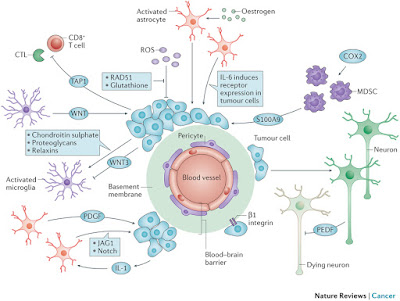Fast synaptic communication in the brain requires synchronous vesicle fusion that is evoked by action potential-induced Ca2+ influx. However, synaptic terminals also release neurotransmitters by spontaneous vesicle fusion, which is independent of presynaptic action potentials. A functional role for spontaneous neurotransmitter release events in the regulation of synaptic plasticity and homeostasis, as well as the regulation of certain behaviours, has been reported. In addition, there is evidence that the presynaptic mechanisms underlying spontaneous release of neurotransmitters and their postsynaptic targets are segregated from those of evoked neurotransmission. These findings challenge current assumptions about neuronal signalling and neurotransmission, as they indicate that spontaneous neurotransmission has an autonomous role in interneuronal communication that is distinct from that of evoked release.
Key points
- Synaptic terminals can release neurotransmitter by spontaneous vesicle fusion that is independent of presynaptic action potentials.
- The traditional view of spontaneous neurotransmitter release suggests that spontaneous events occur randomly in the absence of stimuli owing to low-probability conformational changes in the vesicle fusion machinery.
- Recent studies have identified key distinctions between the synaptic vesicle fusion machineries that perform spontaneous versus evoked neurotransmitter release.
- In mammalian hippocampal synapses and at the Drosophila melanogaster neuromuscular junction, spontaneous and evoked neurotransmitter release events show some spatial segregation and activate distinct populations of postsynaptic receptors.
- Segregation of spontaneous neurotransmission enables selective neuromodulation that is independent of evoked release.
- In mammalian hippocampal synapses and at the D. melanogaster neuromuscular junction, spontaneous release events activate specific postsynaptic signal transduction cascades that maintain synaptic efficacy or regulate structural plasticity and synaptic development.
- Novel strategies that selectively target spontaneous release events are needed to address whether spontaneous release can signal independently during ongoing activity in intact neuronal circuits.
- Introduction
Introduction
Our current insights into the mechanisms underlying synaptic transmission originate from experiments that were conducted in the 1950s by Bernard Katz and colleagues. A key aspect of these studies was the discovery of spontaneous neurotransmitter release events, which seemed to occur in discrete 'quantal' packets. This fundamental observation enabled the complex and seemingly intractable nature of action potential-evoked neurotransmission to be analyzed and understood on the basis of its unitary components. Although the original work solely relied on electrophysiological analysis, later studies that used electron microscopy provided visual validation of the hypothesis that neurotransmission occurs through fusion of discrete synaptic vesicles that contain neurotransmitters with the presynaptic plasma membrane.
 |
| Figure 3: Segregation of spontaneous and evoked neurotransmission. |





